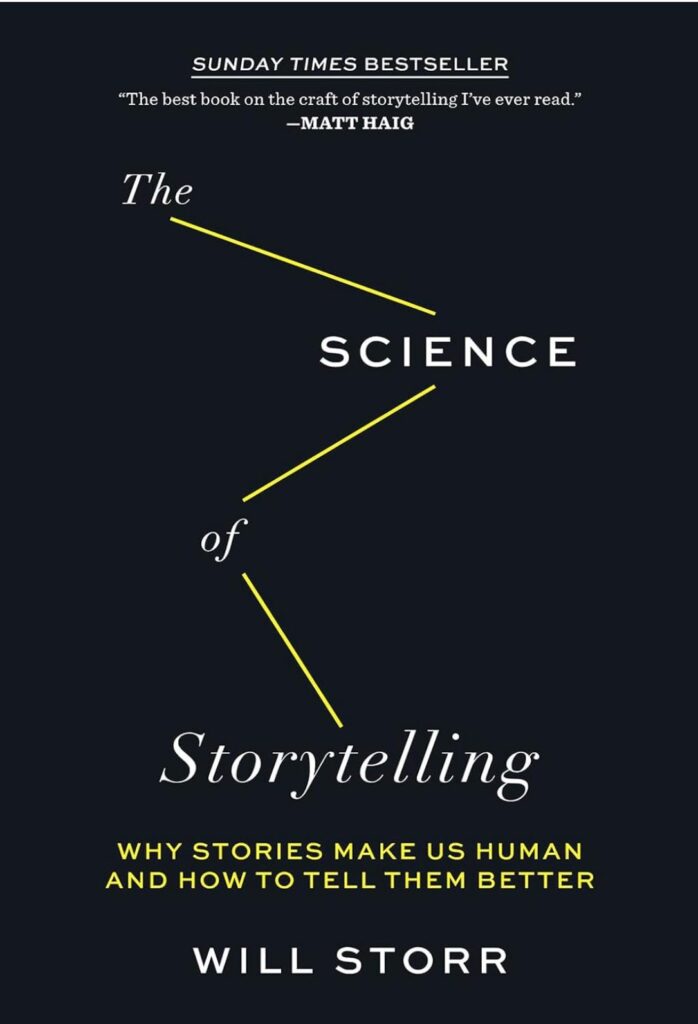When it comes to writing a Hucow series, keeping your readers on the edge of their seats is key. And nothing does that quite like a good cliffhanger. Whether you’re wrapping up a chapter or ending a book in your series, a cliffhanger can leave your audience eager for more, itching to find out what happens next.
In my experience as a Hucow story writer, cliffhangers are not just about building suspense—they’re also a way to deepen the emotional and physical stakes of the story. They keep your readers hooked, ensuring that they not only return for the next installment but also feel emotionally connected to the characters and the unfolding drama.
In this post, I’ll walk you through how to craft cliffhangers that work specifically for the Hucow genre, while staying true to common tropes like transformation, breeding, and power dynamics.
Table of Contents
ToggleWhat Makes a Good Cliffhanger?
Before we dive into specific examples for Hucow stories, let’s talk about what makes a good cliffhanger. A cliffhanger should leave your readers with a burning question. It should stir anticipation, tension, or even anxiety about what’s to come. But here’s the key—it should never feel cheap. A well-crafted cliffhanger builds naturally from the story and characters, rather than feeling like an afterthought.
Creating Emotional Investment
In a Hucow story I wrote, I ended one chapter with the heroine just beginning to understand her transformation. She had started feeling the changes in her body but didn’t fully understand what was happening.
Just as she was about to confront the Alpha about it, the chapter ended. This left readers with a strong emotional investment in her journey. They needed to know how she was going to confront the Alpha and what his reaction would be.
Your readers are there for more than just the physical transformation. They care about the emotional stakes. When crafting your cliffhangers, think about how you can use the emotional journey of your characters—especially the Hucow’s feelings of fear, excitement, or surrender—to create a more compelling and immersive experience.
Using Physical Transformation to Build Tension
Transformation is a key element in most Hucow stories, and it can be a powerful tool for building cliffhangers. Whether your heroine is just starting to notice the changes in her body or is in the midst of a full transformation, leaving her—and your readers—on the edge of a physical shift can be incredibly engaging.
Leaving the Reader in Suspense
In a Hucow story you can write, imagine the heroine standing in front of a mirror, her body beginning to change in ways she can’t quite comprehend. She’s terrified but also curious.
Her skin feels different, her body is reacting in ways she never expected, and just as she reaches out to touch her swollen chest, the chapter ends. This kind of cliffhanger works because it taps into the reader’s curiosity and leaves them desperate to see the transformation unfold.
When using transformation as the basis for a cliffhanger, focus on the sensory experience. Describe the way her body feels, the confusion or excitement she experiences, and the unknown that lies ahead. This pulls the reader into her world and leaves them wanting more.
Power Dynamics and Cliffhangers
The power dynamic between the Alpha and the Hucow is another strong element you can use for cliffhangers. Whether it’s a moment of submission, dominance, or trust-building, the balance of power can leave your readers in suspense.
Dominance and Submission at a Crucial Moment
In a Hucow story that you write, picture the Alpha giving the Hucow a command—one that pushes her boundaries. Maybe he’s just told her that she must fully submit to him in a new way, but she hesitates. She’s torn between her desire and her fear. The chapter ends with her standing at the threshold of a decision: Will she give in, or will she resist? Your readers are left hanging, eager to see how this power dynamic will play out.
Cliffhangers like this work well because they’re not just about the physical act of submission but also the emotional struggle that comes with it. By focusing on the emotional stakes, you create tension that feels both personal and intimate.
Breeding and Cliffhangers: Raising the Stakes
Breeding is a popular theme in Hucow stories, and it can be an excellent source of cliffhanger tension. The idea of impending breeding raises the emotional and physical stakes for both the Hucow and the Alpha, and it’s a great way to end a chapter or book with high anticipation.
The Build-Up to Breeding
In a Hucow story I wrote, I ended one chapter with the Alpha telling the Hucow that it was time for her to breed. Up until that moment, there had been plenty of teasing, foreplay, and milking, but no breeding. This declaration left the readers on the edge of their seats, waiting for the next chapter to dive into the breeding scene.
Breeding cliffhangers work particularly well because they build on the anticipation of a major event. The readers know what’s coming, but they don’t know how it will unfold. Will the Hucow be ready? Will the Alpha be gentle, or will he assert his dominance more strongly than ever before? Leaving these questions unanswered makes the reader hungry for more.
Physical Restraints and Cliffhangers
Another effective technique for cliffhangers in Hucow stories involves the use of physical restraints. Whether it’s handcuffs, ropes, or some other form of control, introducing a physical barrier right before a chapter ends can heighten the tension and leave your readers breathless with anticipation.
The Tension of Being Held Captive
In one of my Hucow stories, I ended a chapter with the heroine restrained in a barn, tied to a post, waiting for the Alpha to return. She was anxious, vulnerable, and unsure of what was going to happen next. Would she submit to him when he returned, or would she try to escape? The suspense created by her physical restraint made for a cliffhanger that kept readers hooked.
When using physical restraints as a cliffhanger, focus on the emotions your character is experiencing. Is she feeling helpless? Excited? Conflicted? These emotions, paired with the tension of being physically restrained, can create a powerful cliffhanger that keeps readers invested in the outcome.
Ending a Book with a Cliffhanger
One of the most effective places to use a cliffhanger is at the end of a book, especially in a Hucow series. Ending a book on a cliffhanger can ensure that your readers will be eager to pick up the next one. However, there’s a balance to be struck—you don’t want your readers to feel cheated or unsatisfied by the ending.
Leaving Them Wanting More
In a Hucow series, you might end the first book with the heroine fully embracing her new identity as a Hucow but facing a new challenge. Maybe she’s just been taken to a different farm, where a new, more intense Alpha awaits her.
Or perhaps she’s started to question the intentions of the Alpha she’s been submitting to. Ending a book with a question or unresolved tension leaves the readers needing to know what happens next, ensuring they’ll be back for the next installment.
When ending a book with a cliffhanger, make sure you’ve still provided enough emotional or physical payoff to satisfy your readers for now, while leaving enough questions unanswered to build anticipation for the next book.
Conclusion
Cliffhangers are an incredibly powerful tool in Hucow stories. Whether you’re writing about transformation, submission, breeding, or power dynamics, a well-crafted cliffhanger can keep your readers hooked and eager for the next chapter or book. The key is to build tension that feels organic to the story and characters, and to make sure that the emotional and physical stakes are high.
As you work on your own Hucow stories, think about how you can use cliffhangers to enhance the reader’s experience. Whether it’s through a physical transformation, a moment of submission, or the build-up to breeding, cliffhangers can add depth, tension, and excitement to your series.
References
If you wish to learn more about the topics I covered in this article, please refer to the following blog posts on this website:
- Grab the Reader’s Attention with a Steamy Opening – Crafting the perfect introduction to hook readers immediately.
- Setting the Stage for the Hucow Transformation – Introduce hints and teases about the transformation early in the story.
- Crafting a Satisfying Hucow Happily Ever After – Ensure your story has a fulfilling conclusion that aligns with reader expectations.
- Delivering an Emotional Payoff in the Closing – Structuring the story’s conclusion to provide emotional closure and satisfaction.
- Creating Instant Chemistry in the Opening Pages – How to establish attraction and tension between characters in the first few chapters.
- Crafting a Powerful Middle for Hucow Stories – Developing emotional and erotic tension in the middle of your story to keep readers engaged.
Alternatively, below are some external references on this topic that you may find useful:
- Writing Cliffhangers in Romance – A guide to crafting effective cliffhangers that leave readers wanting more.
- Creating Emotional Tension in Fiction – Tips for building emotional tension and anticipation in your stories.
- The Art of Suspense in Romance – How to use suspense and cliffhangers to keep readers invested in a series.
- Building Power Dynamics in Hucow Stories – Exploring the balance of dominance and submission in Hucow fiction.
- Writing Transformations in Erotic Fiction – How to use physical transformation to create tension and cliffhangers in your stories.
- Breeding Themes in Erotic Fiction – Crafting breeding scenes that build anticipation and emotional depth.
- Using Restraints in Erotic Fiction – A guide to writing scenes with physical restraints that create tension and suspense.
- Keeping Readers Hooked in a Series – How to maintain reader interest and excitement in a multi-book series.







































